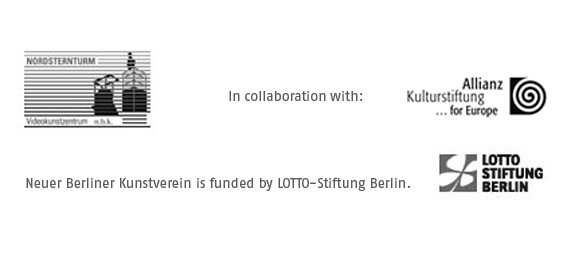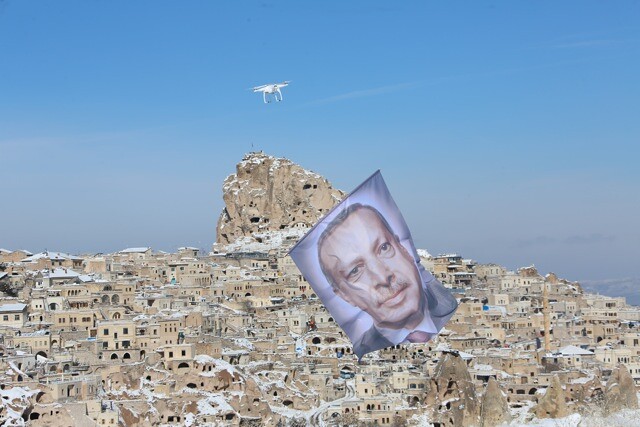The Video Art Collection of Neuer Berliner Kunstverein at Nordstern Video Art Center
March 19–December 18, 2016
Nordsternplatz 1
45899 Gelsenkirchen
Germany
Halil Altındere, Maria Thereza Alves, Yael Bartana, Hartmut Bitomsky, Klaus vom Bruch, Filipa César, Christoph Draeger/Reynold Reynolds, Jimmie Durham, Harun Farocki, Hermine Freed, Dan Graham, Nate Harrison, Helmut Herbst/Friedrich Heubach, Rebecca Horn, Joan Jonas, Angela Melitopoulos, Rabih Mroué, Zoran Naskovski, Marcel Odenbach, Nam June Paik, Eduardo Paolozzi, Hila Peleg, Qiu Zhijie, Oliver Ressler/Dario Azzellini, Mykola Ridnyi, Clemens von Wedemeyer/Maya Schweizer
With contributions by: Nora M. Alter, Yael Bartana, Christian von Borries, Gerard Byrne, Yilmaz Dziewior, Wulf Herzogenrath, Erika Hoffmann-Koenige, Kathy Rae Huffman, Sanja Iveković, Chip Lord, Antonia Majača, Bartomeu Marí i Ribas, Mark Nash, André Rottmann, Beatrix Ruf, Kerstin Stakemeier, Gregor Stemmrich, and Clemens von Wedemeyer
Curators: Marius Babias and Kathrin Becker
Since 2012, Neuer Berliner Kunstverein equips the Nordstern Video Art Center in the landmarked Nordstern Tower in Gelsenkirchen. On five levels, in an annual cycle, changing exhibitions of international video art are set up, coming from the collection of n.b.k. Video-Forum, the oldest and one of the largest video art collections in Germany, founded in 1971, with more than 1,600 works. As part of the exhibition A Sense of History at the Nordstern Video Art Center, Neuer Berliner Kunstverein presents on five levels video installations and film works by 30 artists—including a new work by Halil Altındere as a premiere. On level 9, the plug-in system Ellen (2008) by Silke Wagner serves as a display for 16 monitors with pieces and documents on the viewing politics in video art and for the presentation of early works of international video practice under the thematic focus of working with and on history.
The exhibition A Sense of History, curated by Marius Babias and Kathrin Becker, focuses on positions in video art, which draft alternative narratives to established history and reflect past and present by including historical events and personal experiences. Already at the beginning of video art, the use of extraneous material plays an important role, such as in the works of Wolf Vostell and Nam June Paik, who, for example, distorted television images with the aid of magnets or technically processed short sequences of images with video synthesizers, in order to present them in rhythmic intervals. The use of found footage and its transfer into new contexts is an indication of the reflexivity of video art and its fundamentally critical stance towards the truth content of (electronic) images, as well as towards the hegemonic apparatuses of the mass media. The alternative nature of the medium, its contribution to the autonomization of the producers and the variety of image processing methods predestine video art also for a critical reflection of representations of historical phenomena and related claims of truth. In a variety of works from the exhibition A Sense of History, private and public images, photographs, documentary footage, sequences from classic movies and family shots are combined into new narratives in order to allow alternative perspectives on historical phenomena, to construct spaces of remembrance and forms of personal appropriation of history and to make its associated subjectivisation understandable. The exhibition ranges from Eduardo Paolozzi’s black and white film History of Nothing from 1960/62, being the oldest work in the exhibition, to the new production by the Kurdish-Turkish artist Halil Altındere Escape from Hell from 2016, hence over five decades of critical reception of history in video art.
For further information please see www.nordsternturm.de.


